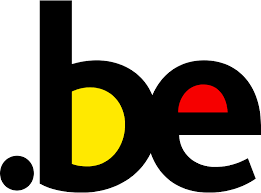8 handy tips to choose a good domain name

Would you like to get started on the Internet? In that case, choosing a good domain name is essential. But how do you choose a good domain name? And what options do you have? Here are a few tips for you...
1. Back to your business plan
 Remember when you had to find a name for your company when you founded it? Well, choosing a domain name is not that different… Back then, when you were drawing up your business plan, you probably pondered a number of key issues. What is the nature of my business? Which product am I going to manufacture or sell? Which service am I going to provide? Who is my target audience? Should I focus on the local market (neighbourhood, city, country) or on the international market? Should I create a separate brand name for my product/service or should I just work under my own name? Et cetera. And the answers to these same questions will immediately put you on the right track when choosing a domain name.
Remember when you had to find a name for your company when you founded it? Well, choosing a domain name is not that different… Back then, when you were drawing up your business plan, you probably pondered a number of key issues. What is the nature of my business? Which product am I going to manufacture or sell? Which service am I going to provide? Who is my target audience? Should I focus on the local market (neighbourhood, city, country) or on the international market? Should I create a separate brand name for my product/service or should I just work under my own name? Et cetera. And the answers to these same questions will immediately put you on the right track when choosing a domain name.
2. Your brand as your domain name
If you found a name for your own brand when you started your company, there is no need to overthink: your brand becomes your domain name – that is, if you did enough research when choosing your brand name and made sure no other company is using the exact same name in Belgium or any other country.
If you work under your own family name, then this is your ‘brand’. This can contribute to the image of some professions (plumber, baker, accountant, mechanic...), but in other sectors (bank, hospitality, web stores...), this is a rather uncommon practice. The use of your last name in your domain name has both benefits and drawbacks.
- Using your last name makes you look friendly and trustworthy. Associating your own name with your business holds a promise of transparency, availability and honesty.
- Your last name alone does not say much about the nature of your business. So, make sure to combine it with a description, like saniVerhelst.be.
- Working under your last name suggests a small scale. Customers will be more inclined to contact saniVerhelst.be that is located in the same city than sanitechniek.be, which has 10 branches. Because people usually expect personal and excellent service from small-scale companies.
- This small scale also has its drawback: fewer people will call on you for large-scale projects.
- Using your last name as your company name may deter potential partners, because the company is tied to its founder. The same applies in case of a takeover.
- The name can of course be changed after a takeover or partnership, but this will cost money, and the company will lose its reputation.
3. A generic term as your domain name
Alternatively, you can opt for a generic domain name, a general term that relates to your product or service. The more general the name, the more easily your potential customers will remember it. Fruit grower Mommaerts can e.g. register “deliciousapples.be” or “fruitishealthy.be”.
Remember that the more specific the term you choose for your domain name, the more difficult it will be to shift the focus later on, if need be. Can fruit grower Mommaerts really sell pears and bananas via his website called deliciousapples.be? With fruitishealthy.be, he will not have that problem!
4. A keyword in your domain name
And why not combine both – a brand name with a generic term? If Mommaerts.be has already been registered by another member of the Mommaerts family, the fruit grower can still go for FruitMommaerts.be or ApplesMommaerts.be.
The choice of the keyword is of great importance in this context. Ideally, you should take some time to think about which markets you want to reach and with which keywords you want people to find you. A handy tool that can help you with this is Google Keyword Planner. This free tool allows you to search for keywords and see what results certain combinations of keywords would provide. As for Google Trends, it tells you how popular certain searches are with Google, and the results can be filtered by country and language.
Tip: you can change the country for which you want to test your keywords via the drop-down menu at the top right of the screen.
If you are targeting the local market, it may be wise to include your city or province as a keyword in your domain name – as in plumberhasselt.be or locksmithturnhout.be.
Tip: in addition to the keyword in your domain name, you should not ignore the meta title and meta description tags in your website, as this is another great way to tell people what your company does.
5. Domain extension: local or international
 The domain extension (also known as the Top-Level Domain or TLD), i.e. the part of the domain name that comes after the dot (e.g. .com or .be), is also very important. Here, you can choose between a country code TLD (ccTLD) like .BE, .NL or .FR, and a generic TLD (gTLD) like .COM, .INFO or .BIZ.
The domain extension (also known as the Top-Level Domain or TLD), i.e. the part of the domain name that comes after the dot (e.g. .com or .be), is also very important. Here, you can choose between a country code TLD (ccTLD) like .BE, .NL or .FR, and a generic TLD (gTLD) like .COM, .INFO or .BIZ.
By going for a ccTLD, you clearly specify the country in which your company is based and the market you are targeting – that is, the local market. As a Belgian company, you should do your utmost to register a .BE domain name, because a lot of people will automatically type .BE after your domain.
With a gTLD like .COM, you will give your company a more international, but also more anonymous character. There is also a middle way, though: the .EU domain extension, which makes it crystal clear that you are targeting the entire European market.
6. The new generic Top-Level Domains: a sea of possibilities
Nowadays, you can even choose from more than a thousand new gTLDs. This will make it easier for you to register the domain name of your dreams at a much lower price, but your extension will also allow you to emphasize your identity.
With an extension such as .LAW, .SURGERY, .VET, .DOCTOR or .EXPERT, you can allude to your profession: lawyer, surgeon, veterinarian, doctor, expert... The product you sell can be given an extra dimension using .NOW, .FUN or .SEXY, but .HALAL and .KOSHER are also possible. As for food and drink enthusiasts, they will most certainly love extensions such as .MENU, .BAR, .CAFE, .REST or .FOOD.
The new gTLDs also give you extra geographical options. From now on, besides .BE, you can also register .VLAANDEREN or .BRUSSELS domain names. Ghent, which has gradually become the Silicon Valley of mobile applications, was the first Belgian city to launch its own gTLD (.GENT).
The possibilities are manifold. But what matters most is that you are well aware of what the possibilities are before you make your choice. Combell has developed a handy overview of all available new domain extensions.
7. The hacks
 And finally, there are also smart domain names, which are referred to as “hacks”. By making clever use of the domain + extension combination, you can come up with short and powerful domain names. Famous examples include Pla.net, Del.icio.us, blo.gs, love.me, bit.ly and goo.gl. In order to help you come up with such combinations, Combell has put together a comprehensive list of all possible extensions. This site will also help you find some hack-related inspiration.
And finally, there are also smart domain names, which are referred to as “hacks”. By making clever use of the domain + extension combination, you can come up with short and powerful domain names. Famous examples include Pla.net, Del.icio.us, blo.gs, love.me, bit.ly and goo.gl. In order to help you come up with such combinations, Combell has put together a comprehensive list of all possible extensions. This site will also help you find some hack-related inspiration.
8. Auntiephoe.be's golden advice
- The shorter the domain name, the less the user has to type, the better.
- Use your brand or last name, if necessary combined with a generic term (fruitMommaerts.be).
- A sentence is also possible (applesarehealthy.be), but avoid long sentences.
- Using caps in your communication will make it easier to read (ApplesAreHealthy.be).
- Make sure that such sentences are not ambiguous. PenIsland.com, OddsExtractor.com, WhoRepresents.com, PowerGenItalia.com or ExpertsExchange.com, for instance, all mean something completely different without the caps!
- Do the radio advert test: is the domain name clear to the listener, without having to spell it out?
- Avoid hyphens in the domain name. If you go for apples-mommaerst, the radio advert will have to say “Apples hyphen Mommaerts”.
- Avoid numbers or special characters in your domain name: accented letters, for example, are allowed, but if users enter your domain name using mobile devices, they will have to switch keyboards – and that is quite inconvenient! Do the test and enter your desired domain name yourself on your mobile device.
- Choose the domain extension according to your identity, location and target group.
- Do not hesitate to opt for one of the new gTLDs; great sounding domains can currently be registered for a small fee.
- Do you, as a Belgian company, have a .com or any other gTLD? If so, you should also register the .be variant and have it redirected to your main domain.
- Avoid free domain extensions such as .TK, as they will undermine your professionalism.
- Do not use (registered) trademarks in your domain name if they do not belong to you. Check whether your chosen brand name is not a registered trademark for the US at Trademarks411 or WIPO.
- Are you still struggling? Domain Wheel and NameMesh will help you find a good domain name. Additional tools to find a good domain name or company name can be found in our article entitled “Coming up with the right company name using a name generator”.
- Are you not sure which domain extension(s) you should choose, nationally of internationally? Read our blog post about the best domain name strategy.
These handy tips should help you pick a good domain name in no time. Have you made up your mind?
Register your domain name now!


